The Rwandan Genocide, more commonly known as the ‘Genocide against the Tutsi’ refers to the mass killings of Tutsi ethnic group, along with the Twa, and some moderate Hutu in 1994, during the Rwandan Civil War. The genocide carried out by Hutu nationalists with support from members of the Hutu majority government, witnessed the massacre of an estimated 500,000 to 1,000,000 Rwandans in 100 days from April 7 to mid-July 1994. Only the 1970s killings in Cambodia and the 1971 Genocide in East Pakistan (now Bangladesh) saw a greater level of genocide in any country. Taken as a percentage of population, however, the Rwanda genocide easily surpasses East Pakistan’s, leaving it second only to the Cambodian genocide.
The genocide was started by the nationalist Hutus in the capital city of Kigali and it then spread throughout the country. Civilians were provoked to take up arms by the Hutu power government and the local administration; and violence spread like fire throughout the country. People were killed in their homes, churches and schools and women became victims of sexual assaults. During the period of the genocide, the country returned to a state of civil war once again. Know more about the historical event through these 10 facts about the Rwandan Genocide.
** RWANDA GENOCIDE BACKGROUND
Ethnic Groups
One of the smallest countries in the continent of Africa, Rwanda is geographically located in the African Great Lakes region. There is only one cultural group prevalent in the country, the Banyarwanda which consists of three sub groups, the Tutsi, the Twa and the Hutu. The Tutsi, who are also known as Watutsi, Wahinda or Wahuma are the second largest ethnic group in the country. The Great Lakes Twa, also known as Abatwa or Ge-Sera, are mostly a group of indigenous pygmy people and are considered the oldest surviving population of that region. Lastly, the Hutu or the Abahutu consists of the largest population in the country.
Colonization
Over many generations, the Hutus, who were principally farmers and in majority in Rwanda, came to be dominated by the smaller but more accomplished pastoral minority Tutsi. In the pre World War I scramble for Africa, Rwanda was annexed by Germany and it later come under Belgian rule. The colonial rulers identified the Tutsi as the power-holders and the Hutu cultivators as their subjects, thus deepening the existing social and ethnic divide. Like in 1935, Belgium introduced a permanent division of the population by strictly dividing the population into three ethnic groups. This was followed by issuance of identity cards labelling each citizen as a Hutu, Tutsi or Twa. The ethnic identities of the Hutu and Tutsi were reshaped and mythologized by the colonizers with the Tutsi being identified as Ethiopian settlers. Colonial attitudes and policies of divide and rule, along with the influence of the Church missionaries, widened the existing rift between the Hutus and Tutsi. This led to the first Rwandan Revolution of 1959 and exodus of over 150,000 Tutsi to neighboring countries: Burundi, Uganda, Tanzania and Zaire.
Independence
In 1962, Rwanda gained independence. The Parmehutu Party (backed by Hutus) emerging into dominance, and Grégoire Kayibanda took control of the new Hutu republic for a decade. By 1964, over 300,000 Tutsis had fled Rwanda who unlike pre independence migrants were considered as refugees in their host countries. Kayibanda was overthrown in a 1973 coup bringing President Juvénal Habyarimana (also a Hutu) to power. Pro-Hutu and Anti-Tutsi discrimination continued in Rwanda under Habyarimana’s long single party rule, however indiscriminate violence against the Tutsi did witness a fall.
Rwandese Alliance for National Unity
On the other side, Tutsi refugees in neighboring countries harbored the wishes of returning to Rwanda. In 1979, after the fall of Idi Amin in Uganda, Tutsi refugees in the country set up the Rwandese Alliance for National Unity (RANU) for the purpose. The organization turned militant when several Tutsi refugees joined Yoweri Museveni’s National Resistance Army (NRA) and fought successfully in the Ugandan Bush War (1980-86). By the time that the victorious NRA entered the Ugandian capital of Kampala in 1986, about a quarter of it’s 16,000 combatants were Banyarwanda, while an active RANU member Fred Rwigyema was its deputy commander.
Rwandan Civil War
Success in Uganda led to the RANU holding their 7th congress in Kampala in 1987. The organization was renamed Rwanda Patriotic Front (RPF) and was now dominated by war veterans. The RPF led by Major-General Fred Gisa Rwigyema would invade Rwanda on October 1990, starting the Rwandan Civil War. The Civil War led to the signing of the Arusha Accords between the RPF and President Habyarimana on August 4, 1993. The peace treaty signed in Arusha in neighboring Tanzania, envisioned the establishment of a Broad-Based Transitional Government (BBTG), which would include the insurgent RPF. Little progress was however made moving forward with both parties delaying, and the assassination of Habyarimana finally ended the chances of any peaceful resolution.
Main Sources:-
Block, Robert (Apr 8, 1994). ‘Ethnic Strife links two countries’, Pg 6, The Ottawa Citizen
Shaw, Erik J (May 2012), “The Rwandan Genocide: A Case Study”. Researchgate.net.
Case No. ICTR-96-4-T (Sep 2, 1998), “The Prosecutor versus Jean-Paul Akayesu”, International Criminal Tribunal for Rwanda
Samuel Totten; William S Parsons (2009). “Century of Genocide, Critical Essays and Eyewitness Accounts.” p421, RoutledgeFalmer
Prunier, Gérard (1999). “The Rwanda Crisis: History of a Genocide (2nd ed.)”, Kampala: Fountain Publishers Limited.
Mamdani, Mahmood (2002). “When Victims Become Killers: Colonialism, Nativism, and the Genocide in Rwanda”, p172-173, Princeton University Press.
Diamond, Jared (2005). “Collapse: How Societies Choose to Fail or Succeed”, p313, New York: Viking.
#1 ASSASSINATION OF BURUNDI PRESIDENT NDADAYE INCREASED ETHNIC TENSIONS IN RWANDA
The small country of Burundi, south of Rwanda, shared similar cultural, ethnic and historical backgrounds with its northern neighbor. It was inhabited by the Tutsi, Hutu and Twa ethnicities, was governed by Tutsi rulers before colonization, was part of German East Africa along with Rwanda, and was under Belgian rule post World War I until it gained independence in 1962. In June of 1993, Melchior Ndadaye was elected as president of Burundi, defeating Pierre Buyoya of the ruling party. He was Burundi’s first Hutu president securing 80 percent of the seats in parliament in central Africa’s first ever democratically held elections. In October of the same year however, Ndadaye was ambushed and assassinated by ethnic Tutsi military officers in a failed coup aided by Buyoya. The assassination of Ndadaye led to the beginning of a civil war in Burundi, which would last more than a decade. In the first year of the war, nearly 50,000 to 1,00,000 people were killed on both sides. This incident had a spillover in neighboring Rwanda, inciting animosity between the Hutu and Tutsi groups, thus becoming the prelude for the Rwandan Genocide of 1994.
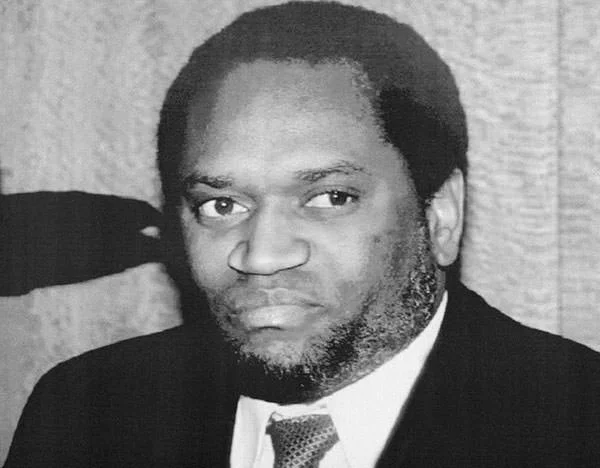
The Coalition for the Defence of the Republic (CDR) (Hutu nationalists) and the Rwandan Patriotic Front (RPF) (Tutsi backed) used this upheaval in the country for their benefit. They instigated the public against each other and reaped the benefits of the destruction caused by the violence. It is suggested that the Tutsi genocide was in the planning for several years, but this incident was the perfect opportunity to set the plan in motion. During the time of unrest, it was easy to persuade the common people to follow their propaganda. Civilians were given weapons to kill and the public anger over the assassination was used to fuel the hatred and violence.
Main Sources:-
Reuters Staff. (Oct 21, 2020). “Ex-Burundi president gets prison term for 1993 killing of victorious election opponent”. Reuters
Robert and Kathleen Krueger. (2007). “From Bloodshed to Hope in Burundi”. University of Texas Press
Prunier, Gérard (1999). “The Rwanda Crisis: History of a Genocide (2nd ed.)”, p199/200. Kampala: Fountain Publishers Limited.
#2 ASSASSINATION OF PRESIDENT HABYARIMANA WAS THE IMMEDIATE CAUSE OF THE GENOCIDE
On April 06, 1994, a plane carrying the Rwandan president Juvenal Habyarimana and Cyprien Ntaryamira, the Hutu president of Burundi, was attacked and shot down killing everyone onboard. The most reliable assessments agreed that the plane was brought down by surface to air missiles, but the question remained that who was responsible? The Hutu moderates and the Rwandan Patriotic Front (Tutsi) were blamed for the assassination and the event led to extreme unrest in Rwanda between the two ethnic communities.
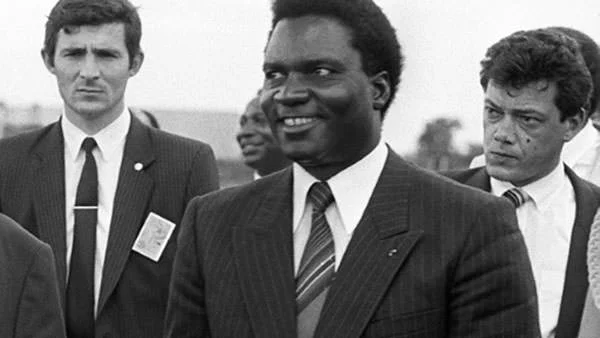
On the same night, the Presidential Guard Major Bernard Ntuyahaga killed Prime Minister Agathe Uwilingiyimana, the legal successor of Juvenal Habyarimana. The Rwandan capital city of Kigali underwent major unrest as Hutu extremists went into the houses of people to murder them. The fatalities included several important political figures, who were killed in their own houses on the night of April 6 1994. By the next day, most of the moderate political figures in Rwanda were either killed or went into hiding. A power vacuum was created which was immediately filled by Hutu nationalists. The genocide began on April 7 1994, with the police and the army joining in the killings. Any Tutsi or moderate Hutu was executed. A systematic ethnic profiling was done to separate the Tutsis by creating checkpoints and barricades. Even civilians were given the freedom and the means to kill any Tutsis. During this time, hundreds of Tutsis were executed by their own neighbors.
Main Sources:-
Shaw, Erik J (May 2012). “The Rwandan Genocide: A Case Study”, p48. researchgate.net.
Dallaire, Roméo (2005). “Shake Hands with the Devil: The Failure of Humanity in Rwanda”, p231. London: Arrow Books
Melvern, Linda (2004). “Conspiracy to Murder: The Rwandan Genocide”, p172. London and New York: Verso.
#3 THERE IS EVIDENCE TO SUGGEST THAT IT MAY HAVE BEEN PRE PLANNED
Many historians have argued that the Tutsi Genocide was planned before the assassination of the Rwandan and Burundi’s president Juvenal Habyarimana and Cyprien Ntaryamira respectively. From 1990 when the RPF led by Tutsi exiles first attacked Rwanda, to the 1994 genocide, Hutu Power propagandists backing President Habyarimana used newspapers and later the radio to disseminate ideas hostile to the Tutsi. Some of these ideas were:-
- Tutsi were foreign to Rwanda and had no right to live there.
- Despite the 1959 revolution, Tutsi continued to enjoy higher status and greater wealth than Hutu and were in some way responsible for continuing Hutu poverty.
- Tutsi posed a danger to Hutu, who were always the victims, whether of Tutsi military power or of Tutsi cunning (use of their women to seduce Hutu, use of their money to buy Hutu), and so Hutu had a right and a duty to defend themselves.
- At the end of December 1990, the vice-rector and a professor at the national university proposed that all adult men be prepared to fight as a self-defense force to “assure security” within the country, if the army were occupied in combat at the frontiers. The force, they said, should be trained by soldiers to fight with “traditional weapons” because they were cheaper than firearms. Two months later, in February 1991, a national official and leader from the north-west published a pamphlet claiming that the RPF planned “a genocide, the extermination of the Hutu majority.” This program was officially named as ‘civil defence’ against the Rwandan Patriotic Front but the weapons and the combat training were later used in the mass murder of the Tutsis. The effectiveness and speed of the mass killings was shocking and pointed towards a well prepared plan. Also a list of traitors was being prepared by the Hutu Power in 1993 and it is suspected that the president’s name may have been on this list.
Main Sources:-
(April 2006). “The Rwandan Genocide: How It Was Prepared”, p4. A Human Rights Watch Briefing Paper.
Gourevitch, Philip (Dec 11, 1995). “After the Genocide”. The New Yorker.
#4 THE CRISIS COMMITTEE WAS THE LEADERSHIP DURING THE GENOCIDE
A Crisis Committee was formed immediately after the death of President Juvenal Habyarimana on April 6, 1994. The committee headed by Théoneste Bagosora became the true power in Rwanda and was the primary leadership of the genocide against the Tutsis. Orders had been given by commanders to kill everyone including infants, children, women and the elder people. The Hutu population in the country was ready for the instructions of the authorities and when the state proclaimed a war against the Tutsis, the Hutus followed the instructions without any hesitations. In the capital city of Kigali, the execution of the Tutsis was undertaken by the Presidential Guard, an elite Rwandan force. People were expected to show their identity cards at various checkpoints on the roads. These identity cards mentioned the ethnic background of a person and anyone who was found to be a Tutsi was immediately executed. The genocide was carried out in an extremely systematic way. The armies entered people’s homes, killed them and looted their properties. In remote and far off areas, it was the civilians who killed their acquaintances. A chain of information was formed and under the orders of the local governments, the Hutus were encouraged to kill the Tutsis.
Main Sources:-
Melvern, Linda (2004). “Conspiracy to Murder: The Rwandan Genocide”, p172. London and New York: Verso.
(April 2006). “The Rwandan Genocide: How It Was Prepared”, p5. A Human Rights Watch Briefing Paper.
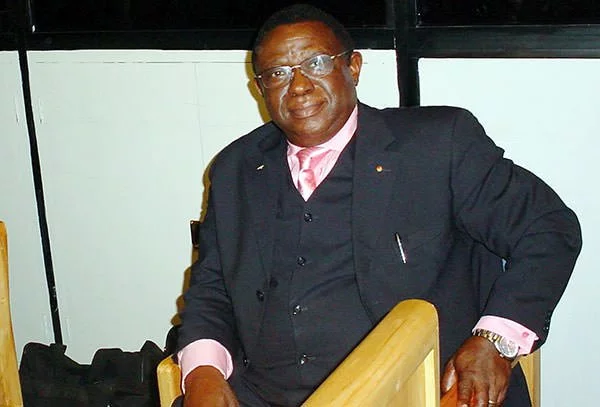
#5 GENDER SPECIFIC VIOLENCE WAS AT THE CENTER OF THE RWANDAN GENOCIDE
During the Rwandan Genocide, rape was used as a weapon to subdue the opposing Tutsi groups. The chief perpetrators of the act were the Interahamwe, or Hutu paramilitary organizations. It is estimated that approximately 5,00,000 women and children were sexually violated, raped, mutilated and murdered during the span of the genocide. Rape and sexual violence against women were used as a propaganda by the people in control of the country. Civilians were incited by using print media and radio to used rape as a means of destroying the Tutsi ethnic group. The army and the militia were at the forefront of the gender specific violence that took place during the genocide.
During the 100 days of the mass killings, patients of AIDS were released from hospitals to rape the women and children of the Tutsi ethnic group. These groups of patients were known as the ‘rape squads’ and were used to infect the women and the children and have them suffer from a slow and painful death. Along with the Tutsi women, moderate Hutu women were also targeted by the extremist Hutus. It is estimated that the sexual violence and rape led to the birth of approximately 2000 to 10000 babies, who were born due to the forced impregnation.
Main Sources:-
Moore, Jina (Jul 9, 2018). “Betraying Justice for Rwanda’s Genocide Survivors”. The New Yorker.
Kolluri, Katya (Jul 18, 2018). “The Rwandan Genocide: Rape and HIV Used as Weapons of War”. Global Justice Center Blog.
Hayden, Robert M. (2000). “Rape and Rape Avoidance in Ethno-National Conflicts: Sexual Violence in Liminalized States”. American Anthropologist. 102 (1): 27–41.
#6 THE RPF ORGANIZED A MILITARY CAMPAIGN TO FIGHT UNTIL THE KILLING STOPPED IN RWANDA
At the beginning of the genocide on April 7, 1994, Paul Kagame was the commander of the Rwandan Patriotic Front. He warned the crisis committee, which was now in power, that a civil war will begin again until the genocide stopped. Using military force as a means to stop the killings, the RPF began their attack from the north and slowly moved down towards the south. The RPF believed that the committee was not really interested in stopping the genocide as it favored their own propagandas. In some cities, such as Kigali, the RPF shut down the supply routes rather than directly attacking the city to get the genocide under control. The United Nationals Assistance Mission for Rwanda (UNAMIR) was unable to get the crisis committee and the RPF to get to an agreement.
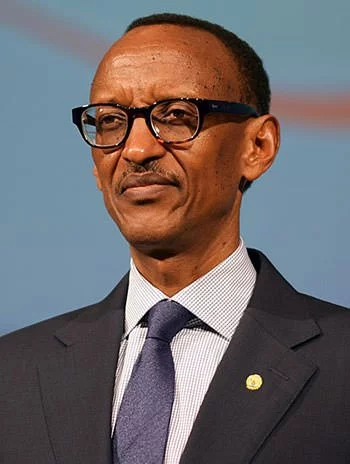
As the RPF progressed, Kagame was also recruiting heavily to expand the army. The new recruits included Tutsi survivors of the genocide and refugees from Burundi. They were however less well trained and disciplined than the earlier recruits. The RPF finally defeated the Rwandan Government on 4 July 1994 and reclaimed Kigali. This date would be marked as the Liberation Day for Rwanda. It is estimated that the RPF killed nearly 25,000 to 30,000 people, most of which were Hutus. Approximately 2 – 2.5 million Hutus migrated to other countries across the borders of Rwanda such as Tanzania and Congo.
Main Sources:-
Dallaire, Roméo (2005). “Shake Hands with the Devil: The Failure of Humanity in Rwanda”, p247, 299, 300. London: Arrow Books.
Prunier, Gérard (1999). “The Rwanda Crisis: History of a Genocide (2nd ed.)”. Kampala: Fountain Publishers Limited.
#7 RWANDAN GENOCIDE IS AMONG THE WORST CASES OF GENOCIDE IN NOTED HISTORY
The Holocaust carried out by the Nazis between 1941 through 1945, led to the mass killings of close to 6 million Jews in German occupied Eastern Europe. The Holocaust wiped out 2/3 of the Jewish population of Europe and is considered as the worst case of Genocide in recorded history. The Rwandan Genocide carried out in just 100 days of 1994, took the lives of 500,000 to 1 million people. The event eliminated anywhere between 60 to 70% of the Tutsi population in Rwanda which was about 7 to 8% of the total population of the country. The genocide is counted among the worst in history. It more aptly compared to the Cambodian genocide (1971-75) and the Bangladesh Genocide of 1971, where all the horror was inflicted within a modern sovereign country, despite cultural or religious similarities. The Bangladesh (then East Pakistan) killings saw the death of 300,000 to 3,000,000 by the Pakistan Army, which was 2 – 4 percent of the population of East Pakistan. The one in Cambodia was definitely far worse with 1.3 to 3 million deaths carried out by the Khmer Rouge, (Communist Party of Kampuchea) which killed 15–33% of the total population of Cambodia.
Main Sources:-
Berenbaum, Michael (2006). “The World Must Know: The History of the Holocaust as Told in the United States Holocaust Memorial Museum (2nd ed.)”. Washington, DC.
McDoom, Omar Shahabudin (2020). “Contested Counting: Toward a Rigorous Estimate of the Death Toll in the Rwandan Genocide”. Journal of Genocide Research. 22 (1).
Shawcross, William(1985). “The Quality of Mercy: Cambodia, Holocaust, and Modern Conscience”, p115-116. Touchstone.
“Welcome | Genocide Studies Program”. Yale.
Dummett, Mark (16 Dec, 2011). “Bangladesh war: The article that changed history”. BBC News.
Nag Oishimaya Sen (15 May, 2018). “The Worst Genocides In History”. World Atlas
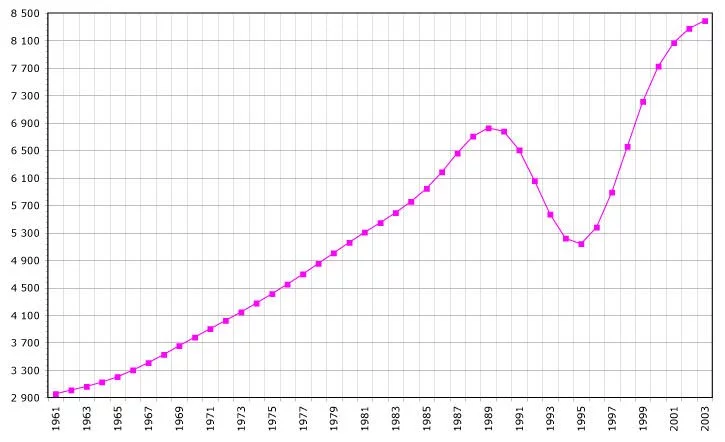
#8 CONGO WARS WERE DIRECTLY LINKED WITH THE FALLOUTS OF THE RWANDAN GENOCIDE
After the victory of the Rwandan Patriotic Front, most Hutus were afraid to face the retaliation for the genocide against the Tutsis. This resulted in mass migration from Rwanda to nearby countries such as the Tanzania and Zaire, which is now known as the Democratic Republic of Congo. Post the Rwandan Genocide, an estimated 1.5 million refugees had settled in eastern Zaire, which also included about half a million Tutsis which had fled Rwanda during the genocide. The Hutu migrants included the Genocidaires themselves such as the Interahamwe and former elements of the Rwandan Army. They soon allied themselves with local mai-mai militia groups getting access to mines and weapons and setting up camps to attack the Tutsi.
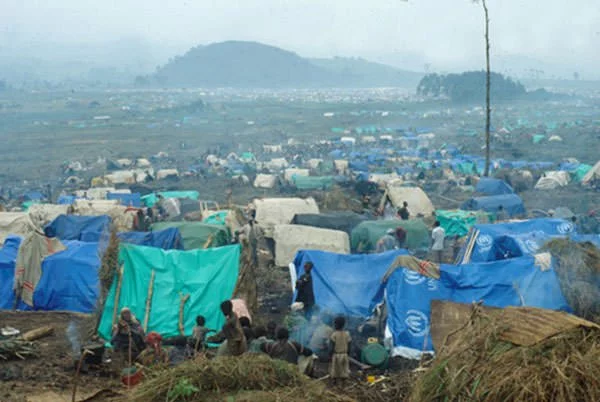
By 1996, Zaire was a dying state following years of internal strife, dictatorship and economic decline. The Rwandan genocide and migration had been the final event that brought the country at the brink of war. President Mobutu Sese Seko’s government failed to counter the migrant tensions. Moreover, it supported the Hutu rebels with training and supplies for an invasion of Rwanda. The Hutu militants in the refugee camps started to enter Rwanda posing a threat to the new Rwandan government. The RPF on the other hand were supporting Banyamulenge, a Tutsi group in the Zaire region, to fight the Hutus in Zaire.
In October, 1996, Rwanda took decisive action and invaded Zaire to defeat the rebel groups beginning the First Congo War. They were soon joined by Uganda, Burundi, Angola, and Eritrea. The war ended with the defeat of Zairian forces and rebel leader Laurent-Désiré Kabila taking over the reigns from Mobutu Sese Seko. The country was also renamed as the Democratic Republic of the Congo. The refugees who escaped from Zaire were hunted extensively by the RPF and ultimately 2,30,000 Hutus were killed. However, the new settlement fell apart again in 1998 and the Rwandan and the Congolese governments were again fighting on opposite sides in the Second Congo War along with several other countries.
Main Sources:-
Autesserre, Severine (2008). “The Trouble With Congo: How Local Disputes Fuel Regional Conflict”, p94–110. Foreign Affairs.
Reyntjens, Filip (2009). “The Great African War: Congo and Regional Geopolitics”, 1996–2006, p30. Cambridge: Cambridge UP.
Abbott, Peter (2014). “Modern African Wars (4): The Congo 1960–2002″. Oxford; New York City: Osprey Publishing.
#9 THE GENOCIDE IN RWANDA BROUGHT THE COUNTRY TO THE BRINK OF COLLAPSE
The genocide had a significant impact on Rwanda bringing the country to the brink of collapse. The economy of the country suffered greatly due to the mass murders. People of the country lost their homes, places of worship, schools and various other infrastructure. Women and children were left to deal with unwanted pregnancies, sexually transmitted diseases and mutilations. Approximately 40% of the total population of the country was either dead or was running from the new government. Of the survivors, women comprised 70 percent of the population. Entire villages were destroyed and social cohesion was in utter disrepair. The people of the country had many long-term effects which they suffer till date. After the country went through a civil war and a genocide, the judicial system of the country was in shambles.
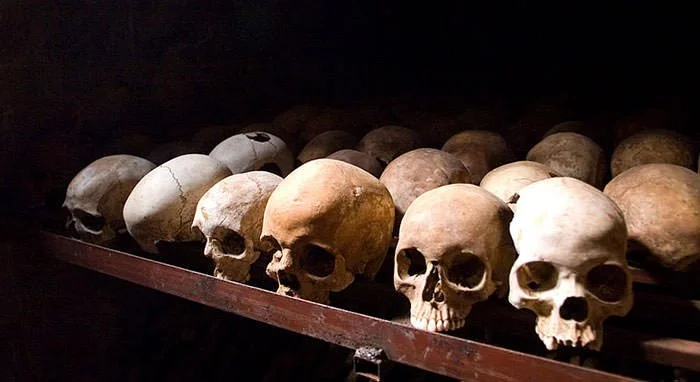
Of Rwanda’s 750 judges, 506 did not remain after the genocide, many were murdered and most of the survivors fled Rwanda. By 1997, Rwanda only had 50 lawyers in its judicial system. Mass arrests were made by the Rwandan Patriotic Front and 1,00,000 people were jailed for their role in the genocide. Numerous doctors, lawyers, politicians and other important personnel were murdered or forced to flee the country. The courts were able to begin trials for the genocide two years after the incident. Lack of international support also made it difficult for Rwanda to recover.
Main Sources:-
Tiemessen, Alana Erin (2004). “After Arusha: Gacaca Justice in Post-Genocide Rwanda” (PDF). African Studies Quarterly. 8 (1): 57–76.
Florance, Charlotte (Dec 6, 2017). “22 Years After the Rwandan Genocide”. Huffpost.
Kinzer, Stephen (2008). “A Thousand Hills: Rwanda’s Rebirth and the Man Who Dreamed It”. London: Wiley Books.
#10 IT HAS BEEN EXTENSIVELY PORTRAYED IN MEDIA AND POPULAR CULTURE
Numerous books have been written on the Rwandan Genocide over the years. Some books portray the real-life experiences and survival stories of people. One such famous example is a book known as Shake Hands with the Devil: The Failure of Humanity in Rwanda written by Canadian Lieutenant General Romean Dallaire, who wrote about his own experiences of the genocide and the impact of the aftermath of the incident on his mental health. Many survivors such as Dr James Orbinski and Immaculee Ilibagiza have documented their stories. The critically acclaimed and multiple Academy Award nominated film Hotel Rwanda (2004) is based on the experiences of Paul Rusesabagina, a Kigali hotelier at the Hôtel des Mille Collines who sheltered over a thousand refugees during the genocide. There are several other main stream movies, television series and documentaries that have been made on the Rwandan genocide.
Main Sources:-
Jenkins, Mark (28 October 2010). “‘Shake Hands,’ Struggle On: A Genocide Revisited”. National Public Radio.
Busari Stephanie, Braithwaite Sharon, McKenzie David (Sep 1, 2020). “’Hotel Rwanda’ film hero Paul Rusesabagina arrested”.

**THE FORGOTTEN VICTIMS OF RWANDA GENOCIDE
The Twa ethnic is one of the forgotten victims of the Rwandan Genocide. Before the genocide, the Twa made up only 1% of the total population of the country. Most research and studies done on the Rwandan Genocide mention the conflict between the Hutus and Tutsis and only focus on the sufferings of Tutsis. Studies have shown that before the genocide in the year 1994, there were approximately 30,000 people in the Twa ethnic group. However, after the mass murder in April, May and June of 1994, it was estimated that almost a third of their population was killed and another third was forced to flee their native land.
Main Source:-
Twa. World Directory of Minorities and Indigenous Peoples.


whoa
You omitted the role of the Roman Catholic Church. The survivors know it! The Church admits it and apologizes now!! Rwanda was the most Catholic country in all of Africa. My Mother warned any Catholic country with too much power is dangerous!! Where is Christ-like neutrality ? To the ‘white fathers’!!!!! Such a beautiful country….. and such humble people and look at their guidance !! The church sanctioned it for their own purposes!! Like concordant with Hitler – RC Church plays it both ways!! Hideous